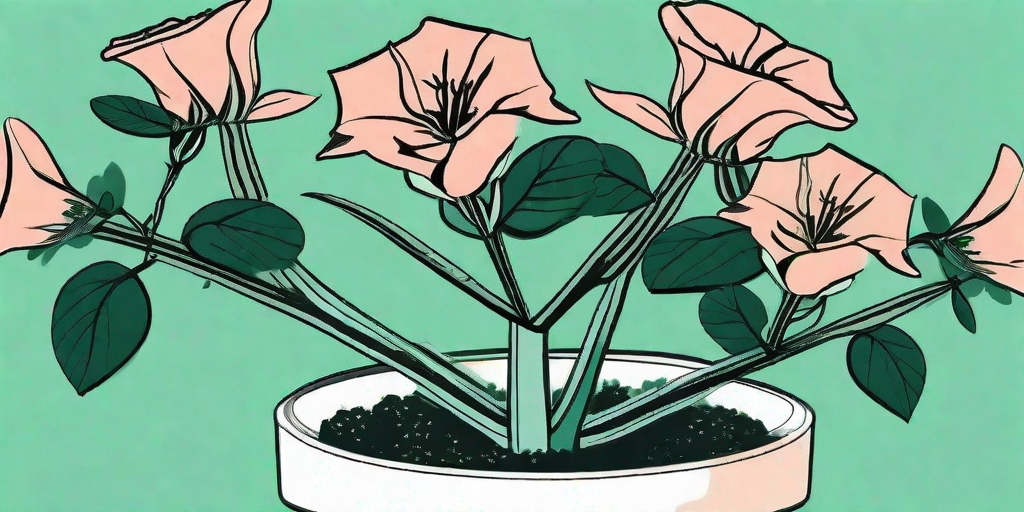
Ah, the Rose of Sharon. A plant that's as beautiful as its name suggests. But if you've ever tried propagating this beauty, you know it's not exactly a walk in the park. Well, buckle up, because we're about to embark on a journey that'll turn you into a Rose of Sharon propagating pro!
Understanding the Rose of Sharon
Before we dive into the propagation process, let's get to know our subject a little better. The Rose of Sharon, also known as Hibiscus syriacus, is a hardy deciduous shrub that's native to Asia. It's known for its large, trumpet-shaped flowers that bloom in late summer.
What's interesting about the Rose of Sharon is its ability to withstand harsh conditions. It's drought-tolerant, can handle full sun exposure, and isn't picky about soil types. This makes it a popular choice among gardeners who want a low-maintenance plant that still adds a pop of color to their garden.
Recognizing the Rose of Sharon
Now, you might be wondering, "How do I recognize a Rose of Sharon?" Well, it's quite simple. Look for a shrub that stands about 8-12 feet tall. The leaves are medium green, with a slightly serrated edge. But the real showstopper is the flower. It's large, usually about 2-4 inches in diameter, and comes in a variety of colors including white, pink, red, lavender, and even blue.
Another unique feature of the Rose of Sharon is its late blooming period. While most plants have finished blooming by late summer, the Rose of Sharon is just getting started. This makes it a great choice for adding color to your garden when other plants have started to fade.
The Secret to Propagating Rose of Sharon
Alright, enough with the introductions. Let's get down to business. Propagating the Rose of Sharon can be done in two ways: by seeds or by cuttings. Both methods have their pros and cons, so let's explore each one.
Propagation by Seeds
Propagating Rose of Sharon by seeds is a fairly straightforward process. The first step is to collect the seeds. You can do this by waiting for the flowers to fade and then collecting the seed pods that form. Once you have the seeds, you can plant them directly in the ground or start them indoors in a seed tray.
While this method is easy, it does have its drawbacks. For one, it takes a long time. You might have to wait up to two years before you see any flowers. Additionally, the resulting plants might not look exactly like the parent plant. This is because Rose of Sharon is a hybrid, and hybrids don't always breed true.
Propagation by Cuttings
The other method of propagation is by cuttings. This involves taking a cutting from the parent plant, dipping it in rooting hormone, and then planting it in a pot with well-draining soil. This method is faster than propagating by seeds and the resulting plants are exact clones of the parent plant.
However, this method does require more effort. You'll need to monitor the cutting closely to ensure it doesn't dry out or become infected with disease. But with a little patience and care, you can have a new Rose of Sharon plant in just a few weeks.
FAQs About Propagating Rose of Sharon
Now that we've covered the basics, let's address some common questions about propagating Rose of Sharon.
When is the best time to propagate Rose of Sharon?
The best time to propagate Rose of Sharon is in late spring or early summer. This gives the plant plenty of time to establish itself before the winter months.
How long does it take for Rose of Sharon cuttings to root?
It usually takes about 4-6 weeks for Rose of Sharon cuttings to root. However, this can vary depending on the conditions. Make sure to keep the cutting in a warm, humid environment to encourage root growth.
Can I propagate Rose of Sharon in water?
Yes, you can propagate Rose of Sharon in water. However, this method is not as reliable as propagating in soil. The roots that form in water are often weaker and more prone to disease.
Final Thoughts
And there you have it, folks! The secret to propagating Rose of Sharon like a pro. Remember, patience is key. Whether you choose to propagate by seeds or cuttings, it's going to take some time before you see results. But trust me, the wait is worth it. There's nothing quite like seeing a Rose of Sharon that you propagated yourself blooming in your garden.
So go ahead, give it a try. And who knows? You might just find that you have a green thumb after all!















